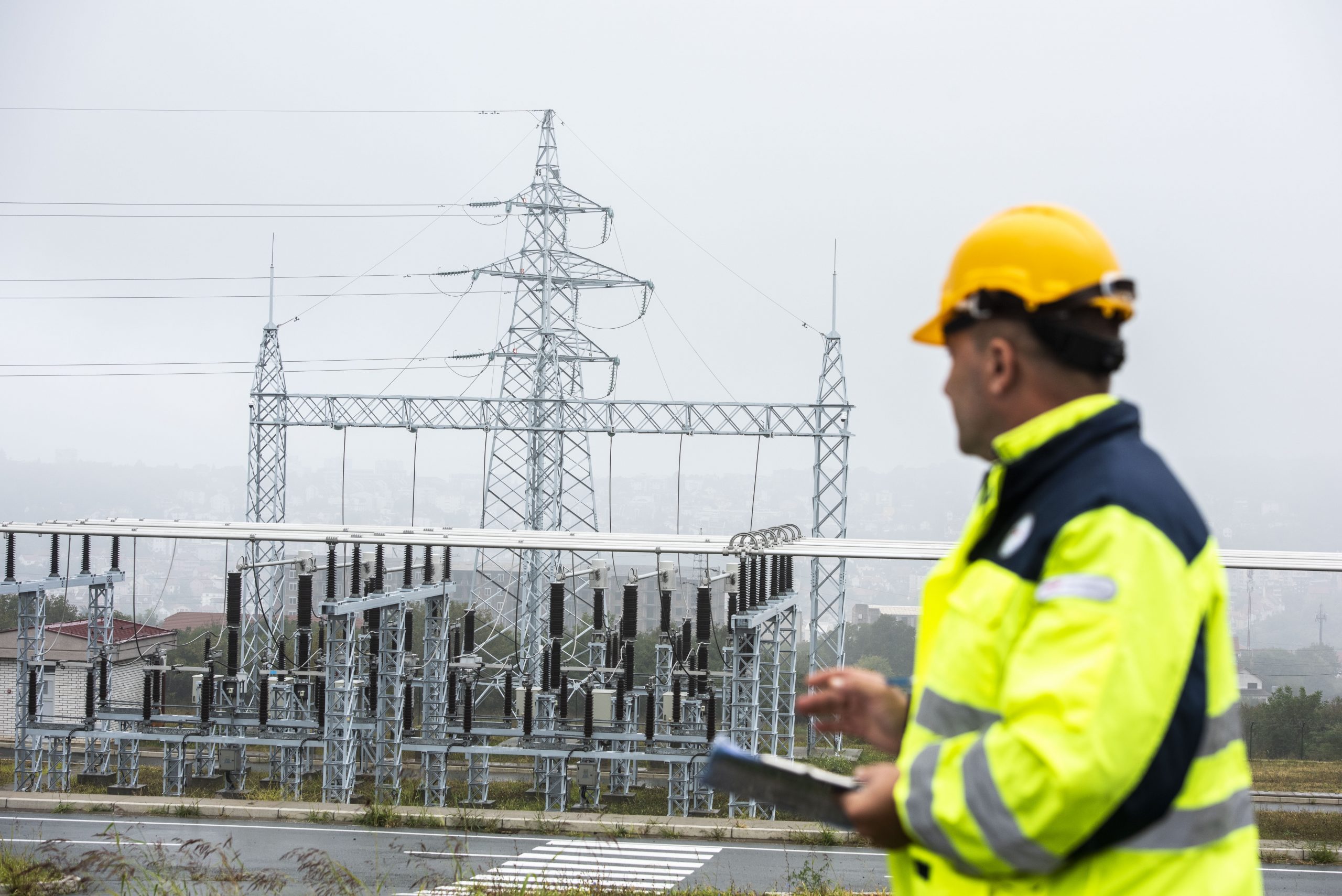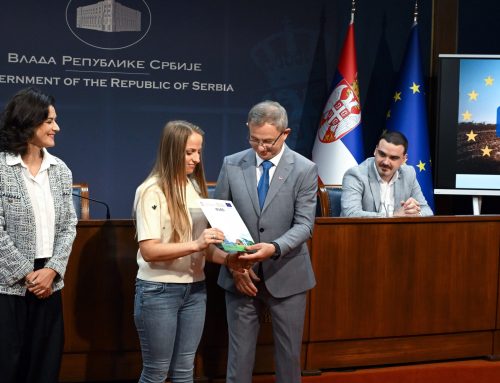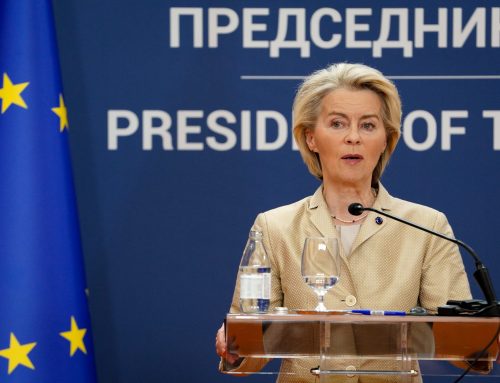New 60 km power lines between Kragujevac and Kraljevo will ensure a better connection and higher voltage for 1 million consumers in Central and Western Serbia. Overloads in the existing system will be eliminated thus reducing outages. Construction of powerlines, with upgrades of substations starts today.
Upgrades will enable powerplants to work less and deliver equal amount of electricity for consumers. General air quality will be significantly Improved. CO2 emissions will be reduced by 10,000 tonnes/year. Savings will be around €540,000 per year, which is approximately 10,800 MWh/year of electricity. 86 new jobs will be created during construction as well as in operation and maintenance periods
European Union supported the efforts by donating 6.6 million euros. This is the first infrastructure project after the introduction of the state of emergency, which speaks enough for the exceptional importance of this project within the Trans-Balkan Corridor for the Transmission of Electricity.
This is a project of a particular national and regional significance that will enable a secure and stable power supply to customers in the territory of the Republic of Serbia and, at the same time, couple electricity markets of eastern and western Europe. This transmission line is part of the second phase of the Trans-Balkan corridor for power transmission. In addition to the power line construction, the Second Phase will also include the upgrade of the substation Kraljevo 3 as well as equipping one 400kV feeder bay in substation Kragujevac 2.
Total contract value of works and equipment amounts to 13.5 million euros. The time limit for completion of the works is 610 days. Total investment value of the Second Phase, including the works in substations of Kragujevac and Kraljevo, is 29.6 million euros.
The financing is secured from the funds of the loan amounting to 15 million euros approved to EMS (supported by the sovereign guarantee) by the KfW Development bank of Germany, then 6.6 million euros of EU grant which will be allocated to EMS via mechanism of the Western Balkans Investment Framework from the European Western Balkans Joint Fund, and from the own financial resources of EMS.
An improved power grid will lead to a more reliable access to electricity for citizens and industry. The 6.6 million euros donation is just a part of the EU support in the energy and connectivity sector.
The project will replace the 220 kV transmission grid, which has worn out in these parts of Serbia with an average equipment age of 50 years. Raising the voltage level of TS Kraljevo 3 to 400 kV will in the future enable stable operation of the Bajina Basta RHE, as well as the future Bistrica RHE (planned 680 MW). The project also contributes to the sustainable economic development of Serbia, as well as to global climate protection by reducing carbon dioxide emissions, as it will bring significant reductions in electricity losses.
The contractor is a consortium consisting of Kodar Energomontaža doo, Belgrade (as the consortium holder), Elektromontaža doo, Kraljevo, and Elnos BL, Banja Luka. When it comes to procurement of equipment, upgrading of substation Kraljevo 3 and equipping the field in substation Kragujevac 2, the selection of contractors is in the final phase and a contract is expected to be signed soon. The project consultant, a consortium of AF Consult Switzerland and ELEM & ELGO, provided extensive support in the procurement of works and equipment.
After the completion of the second section of the Trans-Balkan Corridor, the implementation of the third section will be completed, during which new transmission lines will connect Bajina Bašta and Obrenovac (109 kilometers), raise the voltage level of the TS Bajina Bašta and equip two new transmission lines in the Obrenovac substation, and then the fourth section involves the construction of a double transmission line Bajina Bašta – Višegrad – Pljevlja.




